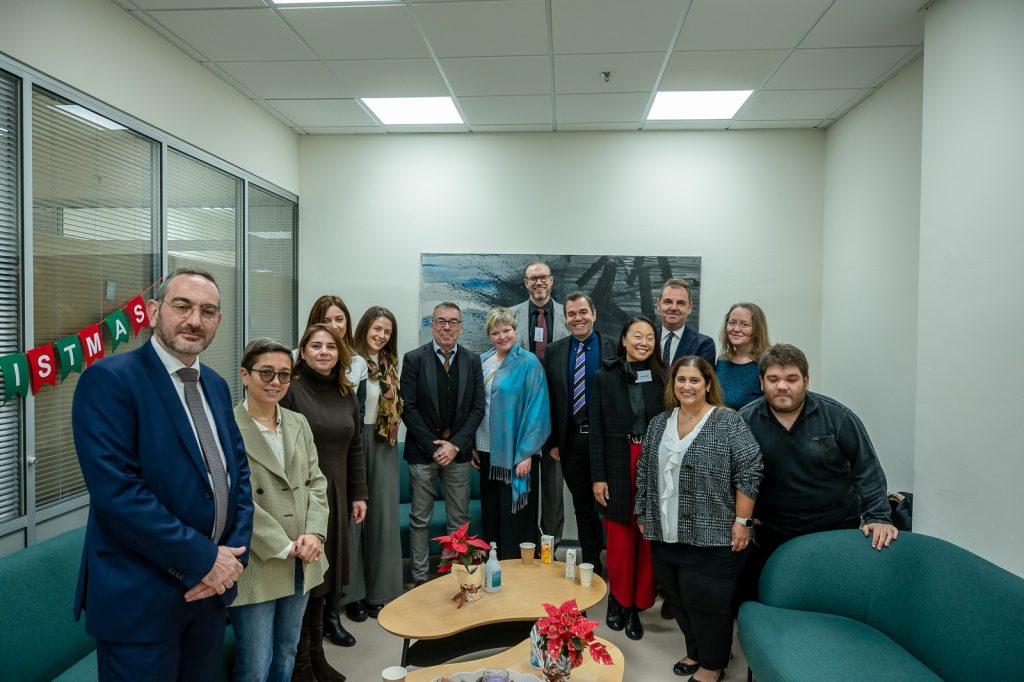
Welcome to our Inclusivity Education Project, where we believe every student deserves a learning environment that celebrates diversity and promotes understanding. Our mission is to provide educators with the tools and resources needed to create inclusive classrooms that empower all students, regardless of their backgrounds or abilities.
Our dedicated educators have participated in comprehensive training designed to enhance their teaching practices and address diverse learning needs. Through thoughtful reflection, they have identified how this training has positively impacted their approach to creating an inclusive classroom environment. We invite you to explore these valuable resources and collaborate with us in our mission to transform education into a more inclusive experience for all learners.
Jake has meticulously conducted a comprehensive assessment of his Year 9 English class to identify learner characteristics and barriers to learning. Through his detailed analysis, he recognized specific challenges some students face with new vocabulary while highlighting the majority’s strengths.
Jake’s approach includes setting clear learning objectives and implementing engaging strategies, such as using educational technology, to enhance vocabulary acquisition. His commitment to fostering an inclusive environment ensures that all students are supported in their learning journey.
Jake reflected positively on the implementation of the Inclusive Education Project with his Year 9 English class. The intervention effectively engaged students, particularly those who struggled with vocabulary, by incorporating technology through Kahoot and Padlet. Students expressed enthusiasm for the interactive methods, highlighting their effectiveness in enhancing learning and participation. Jake noted that the feedback from students was overwhelmingly positive, with many appreciating the fun and competitive nature of the activities. Overall, he believes the intervention significantly improved learning outcomes and plans to integrate these tools more extensively in future lessons, demonstrating a commitment to continuous improvement in his teaching practice.
Antigoni, a dedicated educator in the 3rd Gymnasium, has conducted an assessment of her Modern History class, identifying key learner characteristics and barriers. With 25 students, she noted that many struggle with understanding historical terms, particularly two students with Attention Deficit Disorder and vocabulary deficits. Antigoni recognized that these students feel more comfortable with technology-based learning, such as presentations using PowerPoint, which can engage the entire class.
Her objectives focus on helping students understand the consequences of World War I and appreciate the value of peace, using diverse assessments to monitor progress. By implementing Universal Design for Learning strategies, Antigoni aims to create an inclusive environment that allows all students to connect with historical content in meaningful ways.
In her reflection, Antigoni deemed the lesson a success, noting significant student retention and active participation. The review questions engaged interest, and keyword interpretations helped those with learning difficulties. While the lack of audio resources was a challenge, related videos provided some support for students with ADHD, and bilingual students benefited from vocabulary assistance. Most opted for traditional essays, but one student chose infographics, showcasing varied approaches to learning. Antigoni’s alternative assessment allowed students to evaluate the social consequences of World War I, with most completing the task in class. Moving forward, she plans to incorporate more audiovisual resources and vocabulary exercises to better support all students’ understanding.
Lucy, an educator in technology, has developed an intervention plan aimed at addressing barriers to student participation and analytical feedback in her classes. With 26 students in each class, she identified a reluctance to engage in discussions and a fear of judgment as significant obstacles. Lucy’s approach focuses on empowering students to express their opinions and analyses through various methods, including multimedia presentations and hands-on demonstrations.
By providing a choice in how they deliver their feedback, she fosters a supportive environment that encourages confidence and collaboration. Throughout the process, Lucy will assess student engagement and understanding, refining her strategies based on their experiences to enhance future learning outcomes.
Reflecting on the intervention, Lucy was pleased with the positive outcomes, noting that every student participated in the analysis and review section—a significant achievement for many. The choice board allowed students to present in ways that felt comfortable, fostering creativity and building their confidence. Although some initially struggled with preparation, the focus on positive feedback encouraged them to overcome their nerves. Lucy observed that the diverse presentation methods maintained class engagement, even with similar topics. Moving forward, she plans to integrate this intervention into the curriculum annually, recognizing its effectiveness in enhancing participation and analytical feedback. Overall, she is eager to apply the insights gained from this experience to improve future lessons.
Yannis, a music educator and researcher, crafted an engaging lesson plan titled “Little Music DIY Orchestras,” designed specifically for fourth-grade students. This interactive musical experience empowers students to choose their instruments and collaborate in small groups, fostering creativity, inclusivity, and a sense of ownership in their learning.
Recognizing existing barriers such as misconceptions about music and varying levels of musical ability, Yannis emphasizes hands-on exploration and experimentation to build students’ confidence and skills. His approach incorporates Universal Design for Learning (UDL) principles, ensuring that all students, regardless of their backgrounds or abilities, can participate meaningfully. Through this dynamic orchestral project, Yannis not only cultivates musical talent but also promotes essential life skills like teamwork, communication, and self-expression, ultimately nurturing a lifelong love for music among his students.
Through this project, Yannis not only enhances students’ musical skills but also cultivates essential life skills such as critical thinking and communication, providing a rich and immersive learning experience that promotes a lifelong love for music.
Venie, an educator and researcher, developed an inclusive teaching approach focused on scaffolding writing in linguistically and culturally responsive classrooms. Her methodology, presented in “Feeding Two Birds with One Scone,” emphasizes adaptive teaching strategies to support English as a Foreign Language (EFL) students. Through a structured intervention program, she integrates Content and Language Integrated Learning (CLIL) principles, ensuring accessibility for students with varying English proficiency levels.
Gaki’s approach fosters multilingual inclusivity while promoting critical thinking, historical awareness, and comparative analysis. She leverages visuals and interactive methodologies to enhance engagement, making learning more relatable and effective. Rooted in Universal Design for Learning (UDL) and culturally responsive teaching, her framework not only strengthens students’ academic skills but also nurtures their sense of belonging in diverse educational settings
Persefoni, an educator and researcher, developed an innovative approach to enhancing reading comprehension for middle school students with diverse learning needs. Her intervention focuses on a personalized, blended learning model that supports students facing challenges such as dyslexia, ADHD, and executive functioning difficulties.
Through the use of the Read Naturally program and summarization assessment techniques, Georgiou fosters engagement by catering to visual, auditory, and kinesthetic learning styles. Her approach includes a combination of in-class instruction, online activities, and interactive group discussions to ensure accessibility and student-centered learning.
By incorporating Universal Design for Learning (UDL) principles, Georgiou empowers students to improve comprehension skills through structured goals, adaptive strategies, and continuous formative assessments. The results of her research demonstrate measurable improvements in students’ reading scores over six months, highlighting the effectiveness of individualized instruction and technological integration in inclusive education
Niki, an educator and researcher, developed an Inclusive Education Project focused on Empowering Educators through Universal Design for Learning (UDL). Her initiative is designed to help educators apply UDL principles to create inclusive and effective learning environments for diverse student needs.
Through a structured six-step approach, Manoli identifies learner characteristics, sets clear goals, develops assessments, and designs teaching materials that cater to different learning styles. Her project emphasizes multiple means of engagement, representation, and expression, ensuring that all students—regardless of language proficiency or learning barriers—can actively participate and succeed.
Manoli integrates digital tools such as Edpuzzle, Digital Theatre, Flipgrid, and Google Web Designer to provide dynamic and interactive learning experiences. By leveraging technology, storytelling, and simulation games, she fosters student engagement while supporting differentiated instruction. Her approach not only enhances academic performance but also nurtures creativity, collaboration, and critical thinking, empowering both students and educators in inclusive learning settings.
Michela, an educator and specialist in optimal learning interventions, designed an Inclusive Education Project focused on Promoting Inclusion Through Differentiated Instruction in Writing. Her case study, conducted with 5th-grade students, explores how Universal Design for Learning (UDL) principles can be applied to support diverse learners in persuasive writing.
Through an interdisciplinary approach linking writing to the United Nations Sustainable Development Goals (SDGs), Martines provided students with structured learning tools such as graphic organizers, self-monitoring checklists, and digital platforms to enhance their writing skills. Her methodology emphasized multiple means of engagement, representation, and expression, ensuring that students of varying abilities could participate effectively.
Using targeted interventions like color-coded essay structures, tactile visual aids, class debates, and assistive technology (speech-to-text tools and reading pens), she fostered an inclusive and supportive writing environment. The results showed significant improvements in students’ ability to craft persuasive essays, with notable growth in thesis development, paragraph organization, and argumentation. Future considerations include extending assessment time, incorporating exit tickets for formative feedback, and expanding the use of assistive tools to further enhance student success.
Aristotelis, an educator and researcher, designed an Inclusive Education Project focused on Fostering Collaboration and Confidence in the Math Classroom through differentiated learning strategies. His approach integrates Universal Design for Learning (UDL) and peer-to-peer collaboration to create an inclusive and supportive learning environment.
Thymianos developed a structured intervention targeting 9th and 10th-grade Algebra students, addressing challenges such as low confidence in math, struggles with abstract concepts, and varied prior knowledge. His model promotes group-based, self-paced exercises tailored to different proficiency levels, ensuring all students meet the same standards while engaging at their own pace.
Key strategies include interactive group work, tiered exercises, and peer feedback loops, which allow students to build confidence through structured problem-solving activities. His assessment framework combines pre-diagnostic tests, formative observations, and summative evaluations, demonstrating measurable improvements in students’ engagement, collaboration, and overall math performance.
By implementing targeted interventions and fostering a growth-oriented classroom culture, Thymianos effectively enhances both academic inclusion and social belonging, creating a math learning environment where all students feel empowered to succeed.
